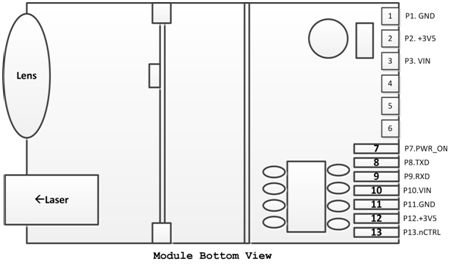Daejeon's crop production is an open-air factory that is not covered and is greatly affected by changes in natural environmental conditions. Crops grown under normal conditions generally have more stable yields. When severe environments occur, crop production can suffer a great deal of damage. As an indispensable means of fertilizing agricultural production, it is also often constrained by changes in the environment. The growth of crops must have a good ecological environment. Among the ecological factors, temperature, light, water and gas are the main climate elements.
In recent years, due to the great changes in the structure of rural labor, the basic investment in agricultural production has been relatively reduced. There are many uses of land and less land, and the content of organic matter in soil has been decreasing year by year. This has led to an increase in the input of chemical fertilizers and rising costs. In order to reduce the input cost of fertilizers, improving fertigation techniques according to the laws of climate change is one of the effective measures to save costs and increase profits. In terms of specific operations, we can start from the following three aspects.
Grasping the practice of temperature-appropriate fertilization shows that the suitable temperature for crop absorption is different from 0°C to 32°C. For example, the optimum water temperature for rice is 30°C~32°C, and the optimum soil temperature for cotton is optimum. It is 28°C to 30°C, barley is 18°C, maize is 25°C to 30°C, and tobacco is 22°C. Therefore, in the hot season, more mature organic fertilizers should be applied, appropriate amount of chemical fertilizers should be applied, and fertilizer should be released with water. During the high temperature season, attention must be paid to the fertilizer and water to prevent the peaks of water and fertilizers from causing prolonged growth and premature aging. In the cold season, semi-ripe organic fertilizer and high-concentration watered manure can be applied to the overwintering crop to provide heat during the decomposition process and increase the ground temperature; secondly, phosphorus and potassium fertilizers can be applied in appropriate amounts to increase the resistance of the overwintering crops. Cold capacity; three can cover plant ash, pond mud, both thermal insulation and fertilizer; Fourth, after transplanting early rice, due to the low temperature, can promptly apply available nitrogen fertilizer, in order to promote the rapid return of green, childbirth; five early maturing varieties, growth period Shorter, low early temperature, nitrogen fertilizer can be appropriately increased, late-maturing varieties of high temperature, appropriate to increase phosphorus and potassium fertilizer.
Using light intensity to increase photosynthetic efficiency Agricultural production is to fully expand the area of ​​crop leaves, use light intensity, and better produce and absorb nutrients to increase photosynthetic efficiency. Therefore, under the premise of dense planting and increased ventilation and light transmission performance, crops should be treated with nitrogenous fertilizer in a well-lighted place to promote vegetative growth and reproductive growth, while light-irradiated areas should be treated with less nitrogen to prevent crop greediness. Late maturity; Second, in the light is too strong, deep fertilization material to prevent photolysis, volatilization; Third, when the light is strong, more phosphorus, potassium fertilizer, improve water use efficiency; Fourth, with the increase in leaf area coefficient, appropriate increase Fertilizers should be applied in the morning and after 4 pm to reduce losses.
The use of water sources to adjust the moisture content of crop plants with water is generally 70% to 80%, and some are even higher. With water, the normal growth and development of crops can be activated. Water can regulate the status of water, fertilizer, temperature, and gas in the soil, not only affecting the root development of the crop, but also affecting the absorption, transformation, expansion, and loss of nutrients by the root system. Scientifically utilizing water sources can be used to regulate fertilizers with water. To adjust the temperature with water, adjust the air with water, and promote the role of water. Due to different precipitation and water conditions, fertilization techniques, first of all, appropriate application of nitrogen fertilizer in the rainy season, to prevent crops grow mad, and prevent loss of fertilizers, three prevent pollution of water sources; Second, pay attention to the method of operation, high soil moisture content At the time, heavy fertilizer should be applied lightly, that is, the fertilizer concentration is higher, but the amount should be less, and it should keep a certain distance from the crop. When the weather is dry, it is advisable to lightly reuse the fertilizer, or to say that there is less water and more fertilizer to increase the frequency of watering.
Industrial Laser Distance Sensor
Industrial Laser Distance Sensor, we also call it secondary development laser distance module, which support TTL level and CMOS. The laser range sensor can be widely used in professional surveying, mapping, construction, robots, hunting arrows, industrial monitoring and automated measurement applications in electricity, transportation, etc. Our laser distance module supports data communication with RS232, USB with a simple adapter. The results of laser distance sensor can be evaluated with Arduino. We are always looking ahead, hoping we can make every measurement simple in life!

Parameters of M703A:
|
Accuracy |
±1 mm (0.04 inch) |
|
Measuring Unit |
meter/inch/feet |
|
Measuring Range (without Reflection) |
0.03-150m |
|
Measuring Time |
0.1~3 seconds |
|
Laser Class |
Class II |
|
Laser Type |
635nm, <1mW |
|
Size |
72*40*18mm (±1 mm) |
|
Weight |
About 21g |
|
Voltage |
DC2.0~3.3V |
|
Electrical Level |
TTL/CMOS |
|
Frequency |
10Hz |
|
Operating Temperature |
0-40 ℃ (32-104 ℉ ) |
|
Storage Temperature |
-25~60 ℃ (-13~140 ℉) |
Laser Distance RS232,Arduino Distance Module,Laser Module RS232
Chengdu JRT Meter Technology Co., Ltd , https://www.rangingsensor.com